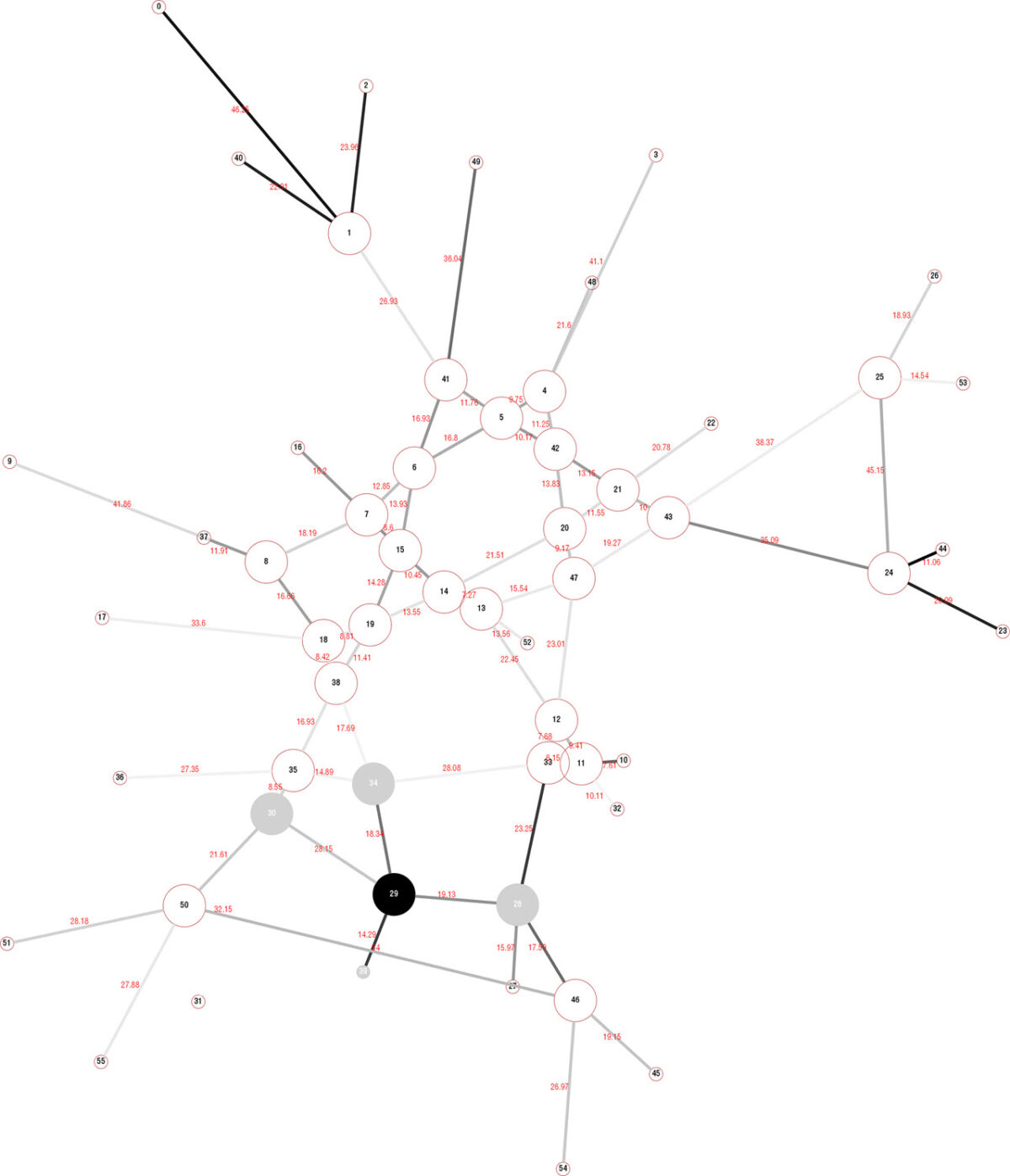Graph theory and mapping systems – ESR6

ESR6 – MULTI SCALAR MODELLING FOR BUILDING DESIGN
AUTHOR: Paul Poinet
The information data contained within an architectural project is usually increasing proportionally with time.
At the beginning of the design process, it is possible manipulate data in a very flexible manner and observe what the design possibilities are according to different parameters.
In the case of timber gridshells, a network of lines representing the different timbers can be projected onto a master surface. The user can move, delete and add beams according to design and structural purposes.
Once the network is fixed and satisfies all conditions required by the user, the design freedom starts decreasing and different class objects are being defined (beam, joint, blanks, facade element, etc.). Once the information is refined for each class, the dependencies between all parameters decrease and feedback processes between classes become difficult and in some cases it is not absolutely necessary.
However, information available at a very high level might be relevant to modify the global network at low level which would improve relevance of data available at high level through feedback.
Obtaining information at high level in order to inform backwards information at low level is often time consuming and requires a lot of computing power to achieve it. To solve this issue, systems usually developed at high level can be abstracted so the results of complex analysis can be predicted with simpler systems at low level.
The graph represented above shows the global torsion of each beam with the help of a black and white gradient. Darker the line is, more torsion exists within the corresponding beam.
The length of each line of the network also represent the length of each timber element.

